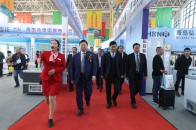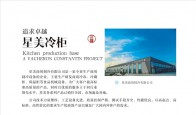Current status of ground source heat pumps and underground thermal energy storage in Europe
2012年02月28 00:00:00 来源:中国空调制冷网
Geothermal Heat Pumps, or Ground Coupled Heat Pumps (GCHP), are systems combining a heat pump with a ground heat exchanger (closed loop systems), or fed by ground water from a well (open loop systems). They use the earth as a heat source when operating in heating mode, with a fluid (usually water or a water–antifreeze mixture) as the medium that transfers the heat from the earth to the evaporator of the heat pump, thus utilising geothermal energy. In cooling mode, they use the earth as a heat sink. With Borehole Heat Exchangers (BHE), geothermal heat pumps can offer both heating and cooling at virtually any location, with great flexibility to meet any demands. More than 20 years of R&D focusing on BHE in Europe has resulted in a well-established concept of sustainability for this technology, as well as sound design and installation criteria. Recent developments are the Thermal Response Test, which allows in-situ-determination of ground thermal properties for design purposes, and thermally enhanced grouting materials to reduce borehole thermal resistance. For cooling purposes, but also for the storage of solar or waste heat, the concept of underground thermal energy storage (UTES) could prove successful. Systems can be either open (aquifer storage) or can use BHE (borehole storage). Whereas cold storage is already established on the market, heat storage, and, in particular, high temperature heat storage (> 50 _C) is still in the demonstration phase. Despite the fa
附件下载











